While it is exciting to purchase fish at the pet store so that you can bring them home and add them to your home aquarium, the sad part is that lots of fish die shortly after being introduced to the home habitat.
Lots of pet stores get blamed for selling fish in poor health; however, the reality is that the untimely passing is more often due to budding home aquarists not knowing how to properly acclimate aquarium fish to their home aquarium habitat.
It’s a common misconception that all you need to do is float the bag in the tank for a few minutes and then dump the fish into the water. However, in the following guide, we’ll take a look at how to correctly acclimatize your fish to their new home and ensure that your fish live long and healthy lives.
Contents
The Proper Way to Acclimate Fish
Step 1
To avoid shocking your new pets when you bring them home, turn down the lights. You should then take the rubber band off the bag. Place the bag in the tank so that it floats on top of the water.
Thereafter roll open the top of the bag four or five times to create rings of air around the bag that will cause it to float. However, in the event that the bag is unstable, roll it down a few more times to create more stability.
Step 2
Acclimating is not an easy process; however, it is a slow and steady one. So to get started, dip half a cup of the tank water and add it to the bag. Wait 15 minutes and repeat this step.
This slow process will allow the fish to acclimatize to the change in water pH and temperature as well as oxygen content, new nutrient levels, sounds, salinity, and lighting.
The best chance that your fish have of survival is a slow and careful process. It will not protect your fish from any diseases or parasites the new ones are carrying, though. It’s also important to be aware that the quality changes in water is only one of the aspects of acclimatizing your fish, and new fish’s life depends on you following the proper process.
Step 3
In order to ensure that the water quality is right your fish, you should test the nitrate, hardness, nitrite, ammonia, pH, alkalinity, and temperature on a regular basis. When on the water tests have been done, then only should you consider adding your fish to your aquarium.
This is because new fish added into the aquarium increases the bio load on the filter system, so that said only a few new fish should be added into the tank at a time.
Ultimately, this will allow beneficial to accumulate enough in the biofilter and eradicate to dedicate the ammonia waste the new fish create before it starts to build up to toxic levels. Placing too many fish at once can overload the biofilter and cause fish loss due to ammonia increases.
You need to test the pH while the temperature is equalizing in order to avoid pH shock, so the pH of the water in the bag must be tested against the pH of the water in your fish tank at home. More often than not, for the short trip of an hour or less from the pet shop to your home, there will be a slight change in the water quality in the transported bag.
But on longer trips, such as when fish are shipped from the breeding farm, and then distributed into the pet shop, the fish could remain in the bag for approximately 2 hours and up to a maximum of a few days.
In cases such as these, the pH of the water tends to drop due to the fish’s respiration, and the ammonia levels in the water will increase.
Step 4
Once the temperature and pH of the water in the bag is the same or similar to the water in the tank, remove the fish from the tank and net them. Carefully add the fish to the aquarium, ensuring that their fins don’t get caught in the net’s mesh.
Instead of pouring the water from the bag into the tank, you should get rid of it, and in the event that the water level inside your tank decreases, you should fill it with dechlorinated water.
Be sure to keep a close eye on your fish to ensure that they’re not bullied by the older fish. Feed the fish a small amount of food at this time so that the old fish are busy and less likely to bother the new ones. It’s always better to place new fish into quarantine tanks for between 2-4 weeks before adding them to the main aquarium.
Avoiding Problems During Acclimation
One of the predominant reasons why fish die after adding them to a home aquarium is pH shock. pH differences may seem insignificant to you but can be lethal to fish. In fact, a small or minute difference of 0.5 can send your fish into pH shock. Ultimately, they may or may not recover from this depending on the severity of the difference in the pH levels. The greater the difference, the more likely they are to die.
So do your homework on the different levels of pH for different species. It’s also important to remember that the pH in the water will gradually drop due to acids produced by the fish’s metabolism, so perform water changes on a regular basis to keep pH levels more stable and to restore the alkalinity in the water.
The goal to bear in mind is that you are trying to give your fish the best possible chance of survival in your home. The water in the fish bag will drop in pH and increase in ammonia during the transportation stage. So making the adjustment to different water quality less stressful as possible for your fish will help keep them healthy and alive.
Freshwater Fish
When it comes to freshwater fish, add a cup of water from your aquarium to the acclimation container.
The fish should acclimate for 10 minutes before repeating this step twice. Thereafter, the fish can be netted and added to the home aquarium.
Salt Water Fish
When it comes to acclimating saltwater fish, it is highly commended that you use drip acclimation. You can purchase a drip that is made specifically for this purpose. Ultimately, it tests the salinity of the water in the acclimation chamber and the salinity of the water in the home aquarium.
Conclusion
You may have had pet fish die in the past due to incorrectly acclimating them or perhaps you didn’t know you were even doing something wrong.
However, now that you are equipped and armed with the appropriate methods of acclimating fish, you can look forward to having an aquarium filled with happy and healthy fish.

Ian Sterling, founder of Fishlab.com, began his aquarium journey over 30 years ago, driven by a deep fascination for fish and their diverse personalities. His website, Fishlab.com, is dedicated to making fishkeeping accessible and enjoyable, offering beginner-friendly guidance, expert insights, and a community for aquarists to connect and share experiences.


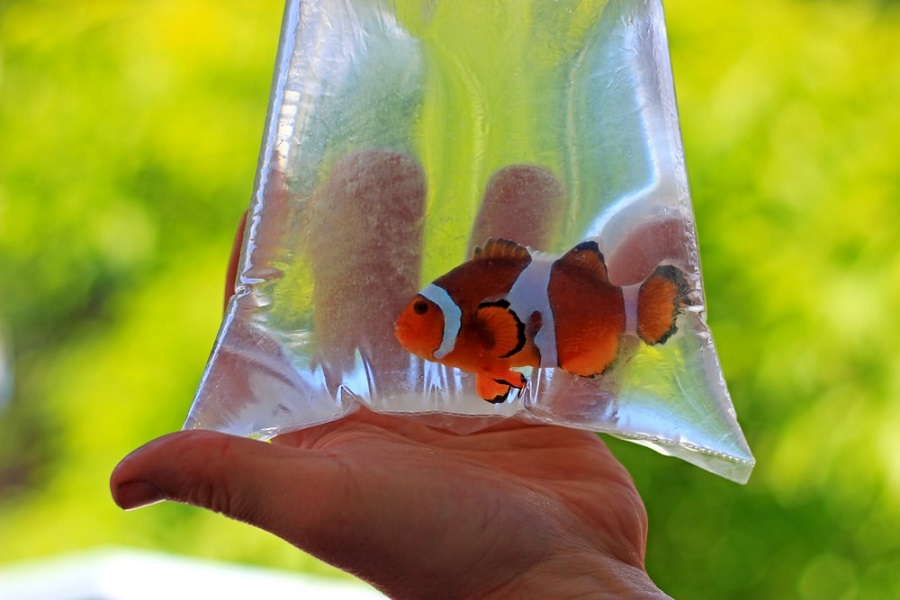
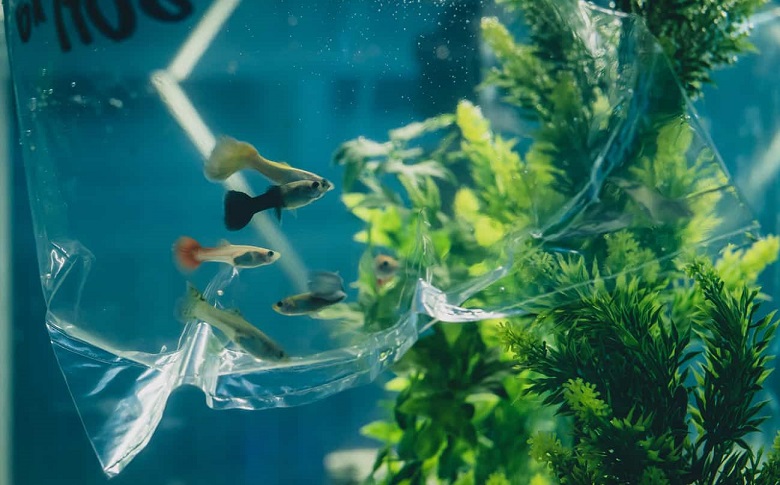
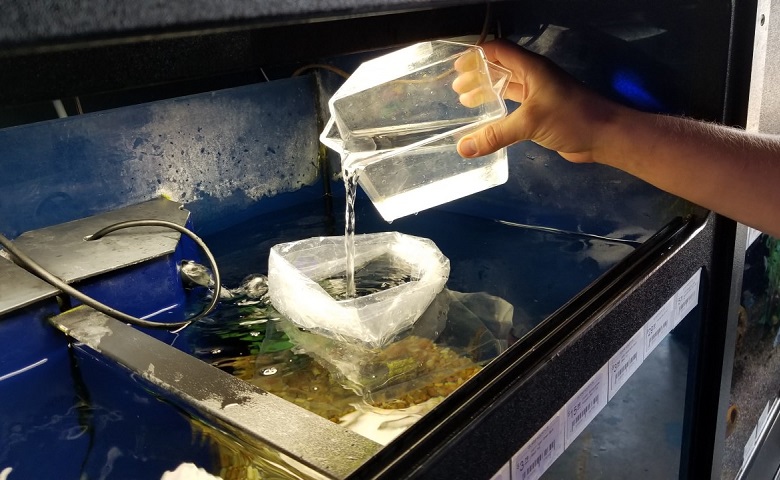
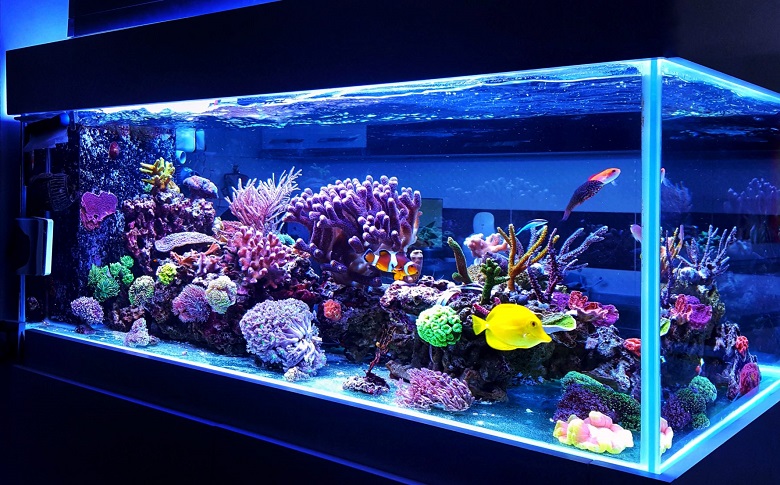
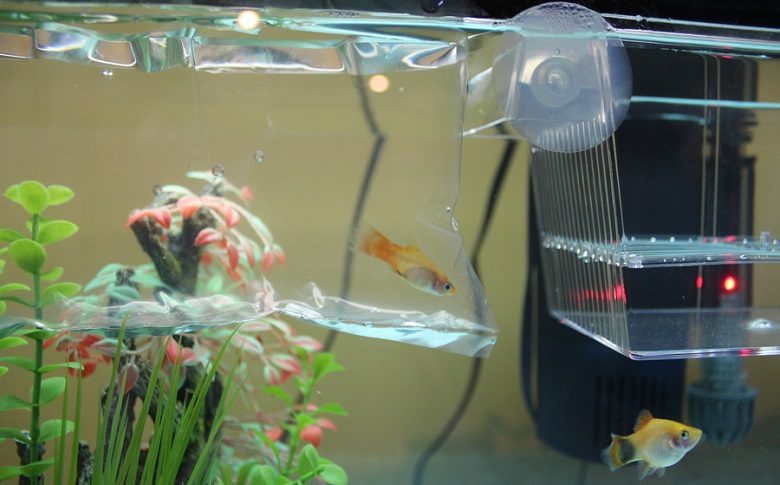
Comments (4)
Hi
I am a new member here. We have recently set up a 145 litre freshwater tropical fish tank.
It has plant substrate and fine sand, with lots of plants and places for fish to hide.
To begin with, we have gradually added, 4 x male guppies, 3 endler guppies, amano shrimp, 3 dwarf corydoras, 3 albino corydoras and 3 honey gourami’s.
A couple of weekend ago we went to a different fish shop to usual and purchased, 5 neon green Rasbora, 6 copper harlequins and 4 x Otto‘s. Sadly upon getting them home, we noticed that they all seemed to have a fair bit of fin rot and what be believed to be cotton fungus. The shop themselves claim that the remaining fish are healthy. However we treated ours with esha 200 ( removed carbon filter) for 5 days. Unfortunately we lost 3 rasbora’s and one harlequin.
Last weekend we did a partial water change (25-30%), washed filter (in fish tank water) and added back the carbon. Now 3 of the 3 previously thriving albino corydoras have died in the last two days ( appeared to be struggling to breath) along with another harlequin.
We continually check the water (including ammonia) and everything looks pretty perfect.
Apologies for the long email, but we ate pretty stumped as to what could be the issue and would welcome any advice from those more experienced.
Thank you
I like your blog, you have answered quite of few questions i’ve had over the years.
i really enjoy reading your reviews.
i’ve had a tank for a long time, but i’m getting more interested in it, changing over to live plants and trying to find a balance for plants and my fish. i would love to hear your thoughts on substrates. i find plenty of reviews on substrates that are good for plants, but having a hard time with the best options for easy care and won’t cut up my snowball pleco’s little belly.
thank you for all the info you have shared
Thank you, I was one of those people who simply floated the bag before adding new fish. I appreciate your knowledge and sharing it so that my new fish have the best chance for survival. Thanks again
Terry
I have a problem. Our neighbours are moving, and gave us a too-small divided tank with two male betta in it. As far as I can tell, they are currently living in water that has only ever been treated with conditioner, and never had an established nitrogen cycle. I have a prepared 10 gallon (divided) ready and waiting with water that’s been dechlorinated and had bio booster added to it to help jumpstart the cycle, but it’s been slow going without anything generating ammonia to feed the bacteria.
Is there a benefit to adding some of the “dirty” water and media (the substrate isn’t gravel, but plastic and glass decor beads, and the decor includes two small statues well as sharp plastic plants) to the big tank? Would it be better to move them to the big tank asap and proceed with an in-fish cycle if their small tank is more detrimental?
The water in both tanks tests within acceptable levels for nitrates/nitrites/ammonia, and the ph/gh/kh are all extremely similar if not exactly the same, as our tap water is from the same source and we have quite hard water where we are, which seems to reduce the chances of pH shock.